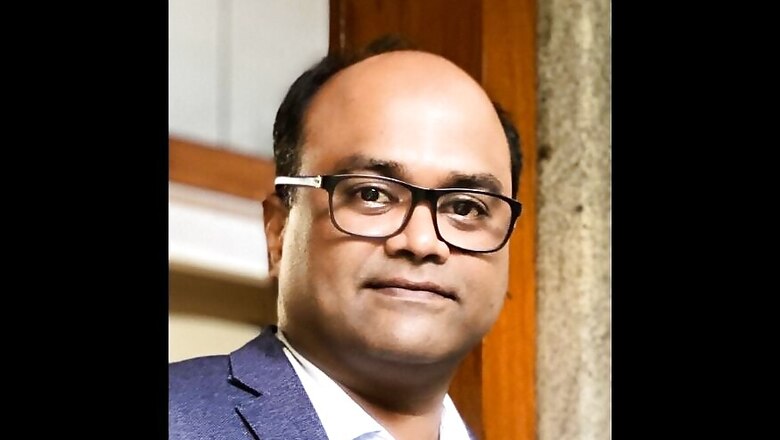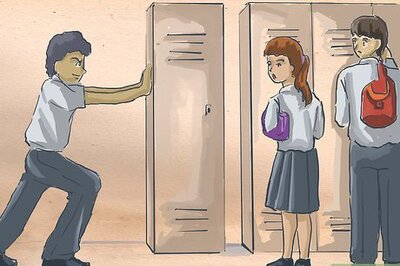
views
New Delhi: The coronavirus pandemic, which has so far claimed 886 lives in the country, has brought to fore the gaping inadequacies in the Indian healthcare system. With government hospitals, which are at the forefront of the fight against Covid-19, scrambling to contain the situation, many believe it is time to commit towards a robust government healthcare infrastructure. As India readies to emerge from the lockdown on May 3, there are growing concerns about what the situation would look like for the country's already overworked healthcare system.
Dr Giridhara R Babu, Professor and Head, Life Course Epidemiology at Public Health Foundation of India, says that in the immediate future, if activities were to be resumed suddenly in the post-lockdown phase, India may see a second wave of infection due to unchecked cases. Babu, a member of epidemiology and surveillance research group constituted by ICMR national task force for Covid-I9, added that herd immunity strategy is unthinkable for India at this stage, especially given that the country is emerging from a prolonged lockdown.
In an interview with News18, Babu talks about a range of issues, including the impact of Covid-19 crisis on India’s healthcare system, and the states that have managed to flatten the curve. Edited Excerpts:
What are the challenges India will have to deal with when it emerges from the lockdown? Is there going to be a surge in the number of infections?
The challenges will differ from state to state; the states that have contained the transmission well with a relatively better health system will do well. Migration of the infected persons from high risk to low-risk areas (urban to rural or high burden state to a state with good containment measures) and active surveillance are going to be essential ingredients of how good a response the state will have. There will be a surge in cases, what we need is to bring it down to be manageable by early detection, early and appropriate health system response.
What will be the long-term impact of the Covid-19 pandemic on India's healthcare system? Many now say that it’s time to pivot towards the public sector. Would you agree?
If we are prepared to learn, the pandemic can inspire us to build a robust and resilient healthcare system. Planning and implementation for public health emergencies will have to become a priority. However, this is possible only if greater investments are made in public health systems that aim at disease prevention and health promotion. Spending millions of rupees on curative services alone is not going to help us. I also hope that awareness towards hygiene will sustain, as it can alleviate the burden imposed by several diseases. On the other hand, gaps in the care of patients of other ailments, especially chronic diseases in the short-term can lead to a long-term burden on healthcare.
During the crisis, we saw that it was only the strength of the public health sector that rescued the nation. I would recommend that public health professionals, doctors and healthcare workers in the public sector should be paid equivalent to the salaries in the UK and US. This will revolutionise the entire public sector. Upgrading the facilities and improving the quality of care, including engaging the private sector for the public purpose, should be a major realignment. There should be increased use of technology, telemedicine, training of primary health workers and mobile hospitals.
In many developed countries, the novel coronavirus outbreak has claimed thousands of lives. How successful has India's response been to the Covid-19 crisis?
So far, India has managed to contain cases of Covid-19 much below the global trajectory. This is mainly because of the well-executed preemptive plans, preventive measures, and strong leadership. In order to sustain the momentum, we need to continue proactive measures to stay ahead in flattening and then bending the curve. We need to strengthen the ILI and SARI surveillance through the Integrated Disease Surveillance Program (IDSP) network.
Which states, in your view, managed to arrest the spread of the disease swiftly? What did they do differently?
Kerala is a clear leader of the pack with several measures. Kerala mounted an efficient Covid-19 response monitored by three task forces of the state health department. It started physical distancing and use of masks by the public as early as January 30 and set up helplines in all districts. Kerala has very efficient testing and screening for Covid-19. Mizoram, Manipur, Goa, Arunachal Pradesh and Puducherry had responded quickly to arrest cases. All the south Indian states and Haryana are doing well in implementing moth mitigation as well as containment measures. Karnataka has implemented several innovative measures such as corona warriors — a group of volunteers to help manage the crisis.
With so much heterogeneity, it is better to compare states internally. As of now, testing and positivity rates combined with case fatality are concerning in Gujarat and West Bengal. In both states, the case fatality is high, while case detection rates are static. This means they have poor surveillance systems. They are not actively looking for cases. Madhya Pradesh has done well in bringing its case fatality, while slowly improving detection rates. They can do better, of course. That will increase denominator for case fatality, and it will improve. Punjab is the star performer in reducing case fatality. For all the states, you can see some correlation between case detection and fatality, but not for Bihar. The concerning thing is deaths are increasing in the last one week, an early sign of undetected hot spots. What we want to see is a horizontal V shape, with testing rates increasing and case fatality decreasing, as seen in Kerala. Case detection keeps improving, and case fatality keeps decreasing. All the south Indian states, Haryana and Rajasthan, are mimicking this V shape from some point of time. A good sign for these states
Sweden’s chief epidemiologist recently said that the country is seeing the effects of herd immunity. Could this work for a developing country like India?
The majority of Indians should get infected with the disease to achieve herd immunity. This is unthinkable at this stage, especially after you had a prolonged lockdown. This is not what we as epidemiologists believe. The goal is to maximise the benefit and have no or very negligible risks. Allowing a strategy such as "Let the disease run its course," is unethical and involves several people dying. In a country with 1.3 billion population, it is not simply possible to provide treatment facilities and hospital care for all the infected people at once. Millions of elderly and people with other comorbidities will die, and in no way can one think of putting the lives of a vulnerable population to risk.
The cases are nearing 200-mark in Mumbai's Dharavi. How can the spread of the virus be checked in places where physical distancing is not a reality?
It is difficult for people to maintain physical distancing given the space constraints. It is important to involve community leaders in maintaining as much physical distancing possible. After getting the necessary training to supervise their work, each leader can take responsibility for a particular cluster of households in slums such as Dharavi. However, mandatory use of face masks is an important element of preventing the spread in slums.
Dr Anthony Fauci of the White House Covid-19 task force recently said that the novel coronavirus would likely strike again in the United States. In the coming months, what's the situation going to look like in India?
Primarily, the one chance that there will be the resurgence of Covid-19 in India is if the lockdown is withdrawn all of a sudden while some states are picking up the cases just now. A few states not doing well may result in spreading the infection to the entire cohort of susceptible in the country. It is suspected that second waves are possible with this virus; it can get complicated. Several factors are contributing to the second wave of infection. In the immediate future, if we resume activity all of a sudden in the post lockdown phase, we may see a second wave of infection due to unchecked cases. Re-infection is also common among recovered patients.
What are the lessons India can take from the coronavirus crisis?
The Covid-19 pandemic is an opportunity to learn lessons more than the crisis. The main lesson that India can learn is that public health is equally or more important than medical care. The importance of preventive medicine can be achieved through simple and cost-effective measures. It includes strengthening the public health surveillance system, spreading awareness among people on hygienic practices, especially respiratory hygiene and hand washing. This is more important for preventing most infectious diseases. One should not forget that India’s success in stalling this epidemic will be due to the strength of the public system; this should not be ignored but strengthened.




















Comments
0 comment